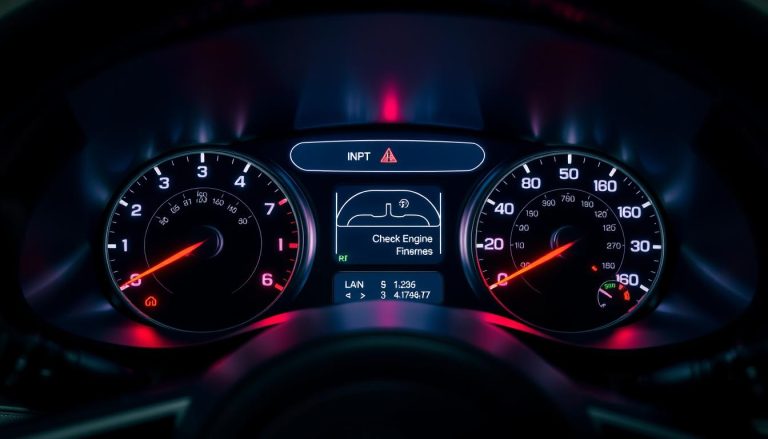When you’re out in the field with your Bobcat, the last thing you want is a surprise breakdown. That’s where understanding Bobcat warning light symbols comes into play. These little icons on your dashboard are more than just colorful distractions; they’re vital indicators of what’s happening under the hood. Ignoring them can lead to costly repairs or even unsafe situations. Whether you’ve just bought a new machine or have years of experience, being able to decode these symbols will save you time and hassle.
In this guide, we’ll explore everything from common warning lights to troubleshooting tips that keep your Bobcat running smoothly. Let’s dive in and empower yourself to understand those crucial signals!
Understanding Bobcat Warning Light Symbols
Bobcat warning light symbols are your machine’s way of communicating its health. Each symbol represents specific issues, ranging from minor alerts to serious concerns. Understanding them can make a significant difference in maintaining performance.
These symbols often appear on the dashboard and utilize universally recognized graphics. This design helps operators quickly identify problems without needing extensive training or manuals.
When a warning light illuminates, it’s vital to pay attention immediately. Some issues may seem minor but could escalate into major failures if left unchecked.
Familiarizing yourself with these signals not only enhances safety but also prolongs the lifespan of your equipment. By knowing what each light means, you’re better equipped to take action before small troubles turn into costly repairs or downtime during critical jobs.
Importance of Warning Light Symbols in Bobcats
Warning light symbols in Bobcats are crucial for operators. They serve as the first line of defense against potential problems. When a light illuminates, it signals that something requires immediate attention.
These icons provide vital information at a glance, allowing users to quickly assess their machine’s condition. Ignoring these warnings can lead to more severe issues down the line, resulting in costly repairs and downtime.
Understanding these symbols ensures safety on the job site. Operators can respond promptly to mechanical or hydraulic faults before they escalate into major failures.
Awareness of warning lights boosts overall productivity too. When machines are well-maintained and responsive, work processes flow more smoothly without unexpected interruptions.
In essence, paying attention to these indicators is not just about preserving equipment; it’s also about maintaining efficiency and safety on every project.
Common Types of Bobcat Warning Light Symbols
Bobcat machines come equipped with a variety of warning light symbols, each serving a specific purpose. Understanding these can save you time and potential damage.
One frequently seen symbol is the engine warning light. When illuminated, it signals potential engine malfunctions or overheating issues that need immediate attention.
Another common alert is related to hydraulic system performance. This icon indicates low fluid levels or pressure problems, which are crucial for optimal machine operation.
Battery alert symbols show up when there’s an issue with your electrical system or battery charge. Ignoring this could lead to more severe electrical failures down the line.
Keep an eye out for tire pressure alerts. These lights indicate that your tires may be underinflated or leaking air, impacting traction and safety on-site. Recognizing these symbols early can prevent further complications and costly repairs later on.
Decoding Bobcat Warning Light Symbols
Decoding Bobcat warning light symbols is essential for operators. Each symbol conveys critical information about your machine’s health and performance.
When you see a light on the dashboard, it’s not just decoration. It indicates something that needs your attention. For instance, a flashing engine symbol often means there’s an issue with spark plugs or fuel injectors.
Pay close attention to these icons as they vary by model. Some may resemble common car indicators while others are unique to Bobcats. Familiarity can save time and prevent damage.
A manual specific to your model serves as an excellent resource for understanding the exact meanings behind each warning light. This knowledge empowers operators to respond effectively before small issues escalate into costly repairs.
Color Coding Bobcat Warning Light Symbols
Color coding plays a crucial role in understanding Bobcat warning light symbols. Different colors convey specific meanings, making it easier for operators to identify issues at a glance.
Red lights typically signal critical problems that require immediate attention. These alerts could indicate engine malfunctions or severe hydraulic system failures.
Yellow lights, on the other hand, often serve as cautionary signals. They may suggest that maintenance is needed soon or alert you to less urgent performance concerns.
Green and blue lights usually signify normal operations and reassure the operator that everything is functioning correctly.
Understanding this color system helps ensure timely responses to potential issues while operating your Bobcat equipment, keeping both the machine and its operator safe on site.
Symbols for Engine Issues
Engine issues can manifest in various ways, often indicated by specific warning light symbols on your Bobcat. Recognizing these lights is crucial for timely intervention.
One common symbol resembles an engine outline. This icon signals that the engine’s performance may be compromised. It’s essential to address this promptly to avoid further damage.
Another important indicator is a temperature gauge symbol, which warns of overheating. If this light activates, it could mean coolant levels are low or there’s a malfunction in the cooling system.
Additionally, check for oil pressure alerts represented by an oil can icon. Low oil pressure can lead to severe engine problems if left unaddressed.
Always refer to your operator’s manual for precise meanings related to your model. Understanding these symbols helps ensure you keep your equipment running smoothly and efficiently.
Symbols for Hydraulic System Alerts
Hydraulic system alerts are crucial indicators for any Bobcat operator. These symbols serve as a direct line of communication between the machine and the user.
One common symbol resembles a hydraulic pump, often accompanied by an exclamation mark. This warning suggests low hydraulic fluid levels or potential leaks within the system.
Another alert may depict a crossed-out circle with arrows around it, indicating excessive pressure. Ignoring this signal can lead to severe damage or even complete system failure.
Operators should pay close attention to these warnings. Addressing them promptly ensures optimal performance and longevity of your equipment. Regular checks on fluid levels and hose integrity can prevent most issues before they escalate.
Familiarizing yourself with these symbols not only enhances safety but also boosts efficiency in operations. Always prioritize understanding what each light means when you hop into your Bobcat.
Troubleshooting Bobcat Warning Lights
When you see a warning light on your Bobcat, it’s crucial to address it promptly. Ignoring these signals can lead to more significant problems down the road.
Start by checking the operator’s manual. It provides specific meanings for each symbol, guiding you through potential issues.
Next, inspect any visible components related to the warning light. For example, if it’s an engine alert, look at fluid levels or connections that might need attention.
If you’re still uncertain after your initial checks, consider running diagnostics with specialized equipment. Many modern Bobcats have built-in systems that can pinpoint exact faults.
Don’t hesitate to consult a professional mechanic if needed. They possess expertise and experience in troubleshooting complex issues effectively and efficiently.
What to Do When Warning Lights Come On
When warning lights illuminate on your Bobcat, it’s crucial to act promptly. Start by referencing the operator’s manual. Each light has a specific meaning that can guide you in addressing potential issues.
Next, assess the severity of the situation. Some lights indicate minor concerns, while others signal critical problems requiring immediate attention.
If safe to do so, pull over and shut down the engine. This helps prevent further damage and allows you to troubleshoot effectively.
Visual inspection is essential; look for leaks or unusual noises before restarting. If you’re unsure about a symbol’s meaning, consult an expert. Ignoring warning signs can lead to costly repairs later.
Remember: taking swift action not only safeguards your machine but also ensures better longevity and performance in the long run.
How to Reset Warning Lights
Resetting warning lights on your Bobcat is a straightforward process. Start by turning off the machine completely. This allows the system to reboot and can often clear minor alerts.
Next, turn the ignition back on without starting the engine. Keep an eye on the dashboard display as it cycles through various checks. If no persistent warnings appear, you might be in luck.
If lights remain illuminated, consult your manual for specific reset instructions related to that symbol. Some models require pressing a combination of buttons or using diagnostic tools for deeper issues.
Addressing any underlying problems before resetting is crucial. Ignoring ongoing alerts could lead to more significant malfunctions down the line. Always prioritize safety and functionality when managing those pesky warning indicators.
Maintenance and Prevention
Regular maintenance is crucial for the longevity of your Bobcat. By following a routine, you can prevent many warning light issues before they arise. Checking fluid levels, filters, and belts should be part of your checklist.
Pay close attention to hydraulic systems and engine components. These parts are often the culprits behind warning lights appearing on your dashboard. A small leak or minor wear could escalate into significant problems if ignored.
Daily inspections play an essential role in maintaining machine health. Look for signs of wear or damage each time you start your equipment.
Additionally, keeping a detailed service log can help track any patterns that might indicate underlying issues needing attention.
Investing in preventive measures goes beyond just avoiding headaches; it enhances productivity too! A well-maintained Bobcat operates efficiently, saving you time and money over its lifespan.
Regular Bobcat Maintenance to Avoid Warning Lights
Regular maintenance is crucial for the longevity of your Bobcat equipment. By sticking to a routine, you can prevent warning lights from turning on unexpectedly.
Start with frequent inspections. Check fluid levels and ensure there are no leaks. Clean filters regularly to enhance performance.
Pay attention to the hydraulic system. Low fluid levels or dirty oil can trigger alerts that may interrupt your workday.
Don’t overlook daily checks before use. Simple actions like examining tire pressure and ensuring all lights function properly can make a significant difference.
Create a maintenance schedule tailored to your specific model and usage patterns. This proactive approach helps spot potential issues early on, keeping those warning lights at bay.
Investing time in upkeep not only prolongs machine life but also boosts efficiency on the job site, allowing you to focus on what matters most—getting the job done right.
Keeping Your Bobcat in Optimum Condition
Keeping your Bobcat in optimum condition requires attention and care. Regular checks can prevent bigger issues down the line.
Start with routine inspections of fluid levels. Engine oil, hydraulic fluids, and coolant should be checked frequently to ensure everything runs smoothly.
Don’t forget about the air filter. A clean filter promotes efficient engine performance and prolongs its life.
Tire maintenance is equally important. Inspect for wear and proper inflation regularly to maintain stability on various terrains.
Additionally, pay attention to belts and hoses for any signs of wear or damage. Replacing these components proactively can save you from unexpected breakdowns.
Follow the manufacturer’s service schedule diligently. This practice helps catch potential problems early before they escalate into more significant repairs.
Symbol Innovations in Latest Bobcat Models
Recent advancements in Bobcat models have introduced cutting-edge symbol innovations that enhance usability. These new symbols are designed to be intuitive, making it easier for operators to understand their machines at a glance.
One notable change is the incorporation of clearer graphic representations. Instead of generic icons, these designs convey specific issues more effectively. Operators can quickly identify what needs attention without sifting through manuals.
Additionally, some models now feature digital displays with animated alerts. This technology provides real-time feedback and guidance on how to respond to various warnings. Bright colors and dynamic visuals catch the operator’s eye, ensuring they don’t overlook critical information during operation.
The integration of customizable warning lights also stands out. Users can select which alerts are most relevant based on their working conditions or personal preferences, tailoring the machine’s interface for optimal efficiency and safety.
Conclusion
Understanding Bobcat Warning Light Symbols is crucial for any operator. These symbols provide immediate insights into the machine’s health, guiding users to necessary actions before issues escalate.
Warning lights serve as an early warning system, helping you avoid potential breakdowns or costly repairs. Recognizing common types of Bobcat warning light symbols can save time and prevent mishaps on job sites.
When it comes to decoding these symbols, pay attention to the color coding; red typically signals urgent problems while yellow indicates cautionary alerts. Engine issues and hydraulic system alerts are among the most common warnings you’ll encounter.
If a warning light activates, it’s essential not to ignore it. Immediate troubleshooting can often identify minor concerns before they become major troubles. Resetting warning lights may also be necessary after addressing any underlying issues.
Regular maintenance plays a key role in preventing unwanted alerts from appearing on your display panel. Keeping your Bobcat in optimal condition ensures that you’re always ready for work without unexpected interruptions.
As technology advances, newer models of Bobcats feature symbol innovations that enhance user interaction and understanding of their equipment’s status—making it easier than ever to stay informed about operational efficiency.
By remaining vigilant and proactive regarding these vital indicators, operators can maintain smooth operations and minimize downtime effectively.


